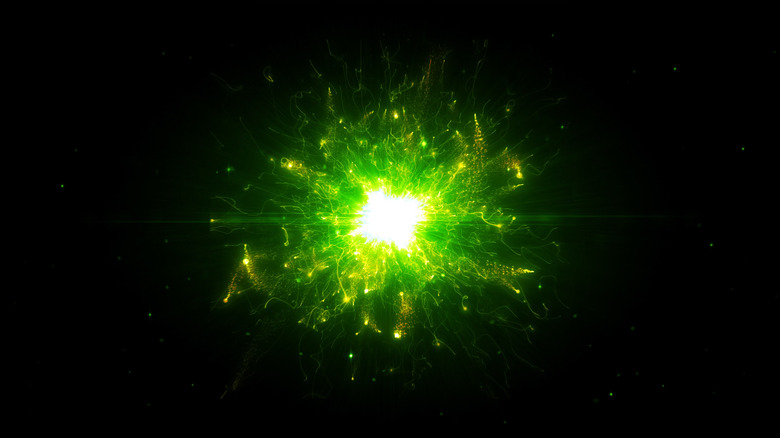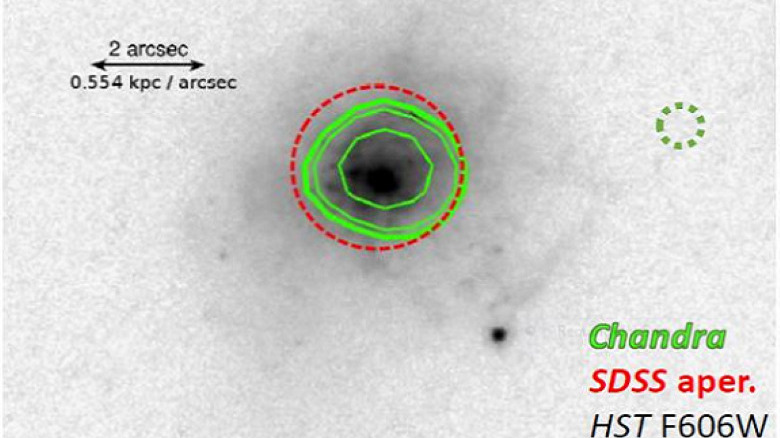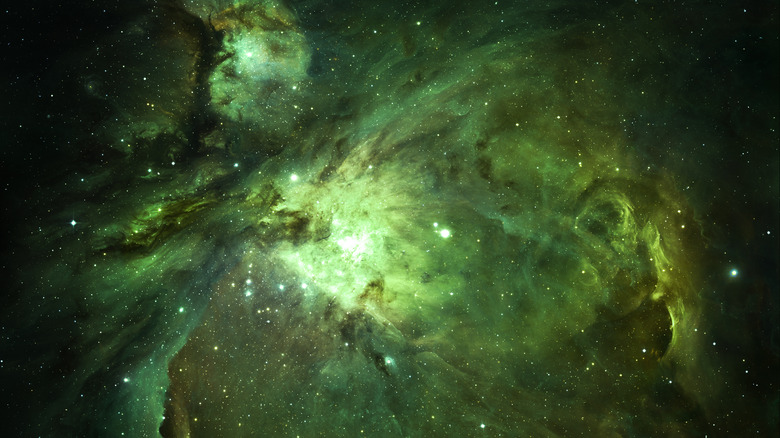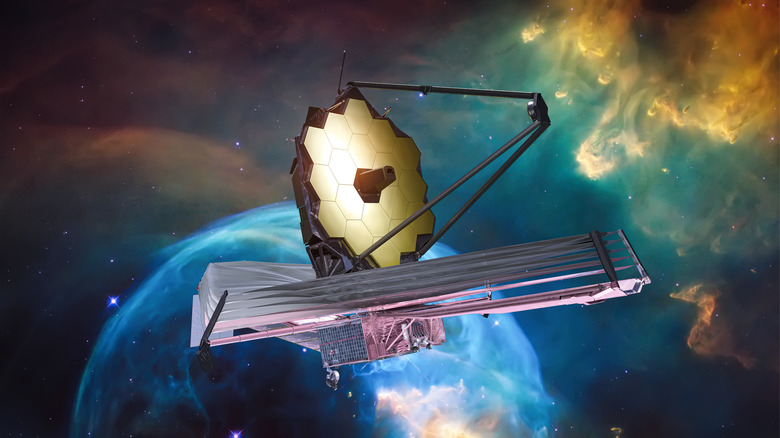Why The Green Pea Galaxies Are Important In The History Of Our Universe
Staring up at the cosmic sky is a surreal experience. Darkness hovers all around, as far as the naked human eye can see. According to Live Science, outer space owes its dark appearance to the fact that it's "a nearly perfect vacuum" lacking the necessary matter to scatter light to our limited scope of vision.
Viewing space through a telescope is an entirely different experience. The James Webb Space Telescope, for example, (abbreviated as JWST) operates over an infrared spectrum, supplying us with vivid images of what the cosmos truly look like beyond what human vision can perceive (via Time). Such dazzling imagery taken by modern astrologists reveals an array of different hues etched across a charcoal-colored sky.
JWST images display far-flung galaxies 13.6 billion light years away from us. These are not pictures of how outer space looks today. Rather, they are photographs of the very distant past — historical photos, if you will — taken in real-time. In these photos, we see galaxies collide in swirls of red, orange, purple, and blue. Oddly enough, one of the most enduring mysteries of outer space is actually pea green.
Here's a look at the Green Pea galaxies and the important role they play in the history of the universe.
Images of Green Pea galaxies were first noticed in 2009
According to Space, a group of "armchair astronomers" made a massive contribution to science when they stumbled across a set of tiny galaxies that resembled small green peas. The find was rare, to say the least. The netizens, who adopted the punny screen name "Give Peas a Chance," collectively analyzed tens of thousands of photographs, eventually identifying approximately 250 Green Pea galaxies from among a million other galaxies.
As it turns out, the galaxies were difficult to find because they only make up about .1% of all nearby galaxies in our current universe (per Space). Small in size, these galaxies measure approximately 5,000 light years in diameter, a measurement comparable to 5% of the Milky Way.
Now, experts believe that wasn't always the case. Science News reports that after much scrutiny, many noted astronomers suspect that the early universe was once abundant with tiny galaxies, all of them resembling little green peas.
They draw their hue from phosphoresce gas clouds
According to Space, Green Pea galaxies get their unique shade from glowing gas clouds emanating waves of light. This stands in stark contrast to other galaxies that take their colors from the stars. Pictures taken from Hubble show that these galaxies produce high volumes of ultraviolet light, and also produce stars at a rate 100 times faster than they should, given their size and mass (via Nature).
This mass production of stars taking place in such a limited space might have enabled the Green Pea galaxies to puncture the blanket of darkness that once encompassed the entire universe, letting in energetic radiation. This event is referred to by scientists as The Epoch of Reionization. It is what caused the Cosmic Dark Age to come to a close, making stars and galaxies visible through what was once a thick hydrogen fog.
Given their unique composition, which is described by Space reporters as "chemically primitive," Green Pea galaxies might clue us in on the history of our universe, presenting the past in a star-studded map that we've never seen before.
The Green Pea galaxies are living fossils in outer space
When we think of living fossils, we often picture animals frolicking the earth or sea – creatures such as crocodiles, possums, and platypuses (via Popular Science). Merriam-Webster defines a living fossil as "an organism (such as a horseshoe crab or a ginkgo tree) that has remained essentially unchanged from earlier geologic times and whose close relatives are usually extinct." Today, thanks to a combination of modern technology and human ingenuity, we have discovered living fossils lurking in the distant corners of outer space — namely, these Green Pea galaxies.
Science News reports that Green Pea galaxies sport the unique capability of rapidly stripping electrons from atoms. This process was a key component in The Epoch of Reionization, an era believed to have taken place more than 400 million years ago, that opened up the entire universe, shining the bright lights of its first galaxies and stars (per Inverse).



